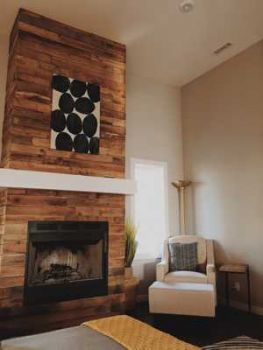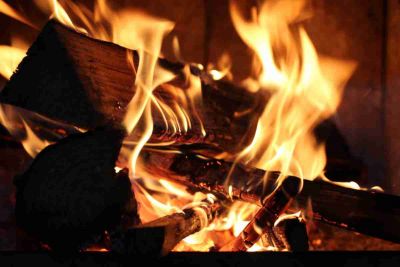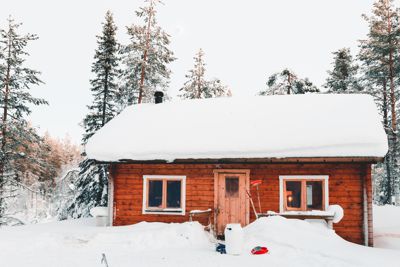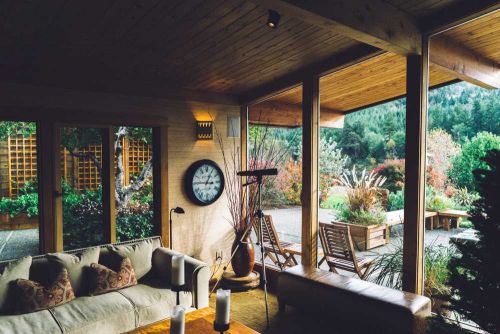Fireplaces
Pest such as cockroaches, rodents, and ants can make their way into your home from many sources, and it is important to keep your home sealed against them to avoid health consequences and discomfort. Pest types vary according to state and some years are worse than others - for instance, 2018 year saw flies, ants, and mosquitoes plague people in 41 states, with around 34% of people seeking professional solutions. Proper installation of fireplaces will help reduce the risk of pests entering your home in warm and cold seasons alike but you can take additional steps to keep your home 100% pest-free.
Installing a Fireplace Door
A fireplace door that is resistant to heat can be completely shut when your fire isn’t burning. This is key during winter, since small animals and rodents can seek warmth in homes, making an entryway though your chimney. Installing a door will make your home considerably less interesting, and you can keep rodents completely out by shutting the chimney once the embers are no longer aflame.
Organize Your Firewood
If you have a large storage space for your firewood, ensure that the logs are organized according to the date of acquisition. Make sure to burn the oldest logs first, since insects have a greater likelihood of producing a sizable colony in old wood. Be particularly strict with log use if you live with people with allergies and respiratory conditions. Toxic pests can trigger asthma and other allergies. In fact, around one third of people with other allergies are also allergic to cockroaches. Symptoms of exposure include everything from chest pain to wheezing. To keep these issues at bay, ensure that logs are neatly and clearly stored so that everyone in the family knows where they should be taking wood from when they wish to start a fire.
Buy Recently Cut Wood
Unless you cut wood yourself, buy wood cut in the recent months to ensure it is fresh and pest-free. If supply of fresh wood is low, consider contacting local logging companies, tree services, and professionals in the reclaimed lumber industry. Check wood before you bring it indoors, ensuring that beetles, carpenter ants, and termites are absent. Bring wood in at the moment you will be burning it, to avoid insects infesting other items of furniture in your home.
Store Wood Optimally
You should store wood far from the fireplace; ideally, all wood should be stored outdoors. Aim to store wood off the ground, to reduce the amount of moisture buildup in the wood. To achieve this goal, consider storing wood atop a makeshift table made of bricks or concrete blocks. To ensure bringing logs to and fro is easy, invest in a log trolley. These are available for $30 or less and can be considered a small investment in your back health. Free reclaimed wood is sometimes available from excavating companies, owners of old barns, remodelling contractors and the like.
Insects and rodents can make their way into your fireplace either through old logs or through the chimney. Fireplace doors and chimney flues will keep rodents out, while using new wood and storing logs outside will ensure insects do not infest your home. Pests can have a big effect on your family’s health and this is especially true for those with asthma and other allergies. The good news is that being vigilant and organized will reduce the chances of a home infestation to zero.
Mor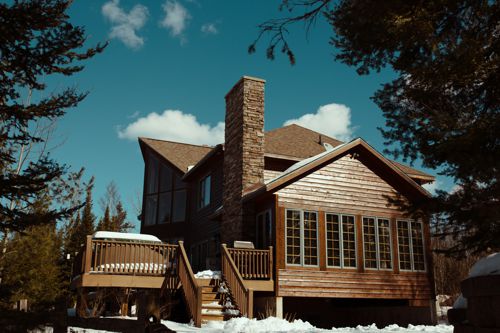 e than 50% of homes in America have a mold problem, according to This Old House. While it’s common for bathrooms, kitchens and bedrooms to develop a mold problem, homeowners rarely consider looking for it in their chimney and fireplace. However, moldy chimneys and fireplaces are more common than you think, and could be the reason for the musty smell in your home, so it’s crucial you get rid of it once and for all.
e than 50% of homes in America have a mold problem, according to This Old House. While it’s common for bathrooms, kitchens and bedrooms to develop a mold problem, homeowners rarely consider looking for it in their chimney and fireplace. However, moldy chimneys and fireplaces are more common than you think, and could be the reason for the musty smell in your home, so it’s crucial you get rid of it once and for all.
Getting to the root cause
There are several different parts of your chimney that could be to blame for mold growth. As a general rule, it could be one of four things causing the mold:
- A lack of ventilation
- A damaged chimney crown
- The brick and mortar
- A damaged chimney cap
Mold occurs in damp and cold places, so when there’s poor ventilation, any damp that does get in has nowhere to go and causes mold. If the chimney crown or chimney cap fail, this can add to the amount of moisture that gets into your chimney, thus worsening the problem. Meanwhile failing to waterproof the brick and mortar that sits within the chimney allows an increasing amount of water to build up, and will quickly lead to mold growth.
Clean up operation
When you suspect that mold has taken over your chimney and fireplace, you should cease using it and arrange for it to be cleaned. If there’s just a small amount of mold visible then you can clean it with an anti-fungal spray and a scrubbing brush. However, it’s best to call in an expert mold cleaning service, as with a chimney, you can never be sure how far the mold has spread or the true extent of the problem. To tackle mold fully, a mold remediation company will thoroughly inspect, assess, and test your chimney and fireplace. From there, they’ll treat the mold with an anti-microbial system, before checking that the mold hasn’t spread further around your home.
Solving the problem
Once the mold from your chimney and fireplace have been professionally removed, you’ll find that your home will instantly smell better. To ensure that things stay this way, you’ll need to tackle the root cause of the problem. This means replacing any faulty parts of your chimney, installing adequate ventilation, and damp-sealing all the bricks and mortar in and around the chimney. It’s also a wise idea to have your chimney professionally inspected annually. An inspection will identify any damp problems early on so that you can take action to remedy them before the mold returns and ruins the inside of the chimney, emitting that annoying musty odor.
Just like any part of your home, your chimney and fireplace are susceptible to damp and mold problems. But there’s no need to worry if you do suspect that mold is invading your chimney, as it’s simple enough to remove it. And, so long as you take preventative action to keep it at bay for good, you won’t have to deal with again.
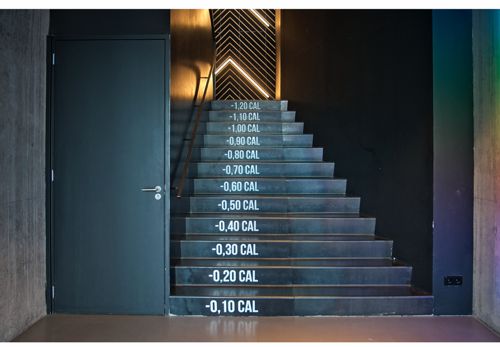
65% of Americans prefer to workout at home than at a local gym. Having a home gym is convenient and can be purpose-built to suit your fitness needs and, with the addition of some luxury features, can help you to de-stress and relax at the end of the day, too. Nothing says luxury like a home gym that’s fully outfitted. By incorporating an extensive range of fitness equipment, a hot tub by a warming patio heater, and a room dedicated to yoga where you can meditate by a cozy fireplace, your home gym can be a truly relaxing and luxurious retreat for boosting your health and wellness.
Choosing the right fitness equipment for you
Kitting your home fitness room out should be done to your needs, rather than buying equipment that you think should be in a gym but that you have no intention of using. If you enjoy jogging outside for cardio and want a home gym for weight training then prioritize free weights and weight machines. Similarly, if your goal is to shed some pounds and improve your fitness, then you should look into some cardio machines. Elliptical trainers, treadmills, and exercise bikes are all good options that allow you to have variation with your workouts. Having a television or sound system can provide you with some entertainment and motivation while you’re working out, so consider installing these, too.
Adding a touch of luxury and relaxation
One of the perks of a gym membership is that you can get additional features, such as hot tubs, access to a pool, and saunas. If you’ve got the space, then adding some of these touches to your home fitness suite can be well worth it. Not only can they help you to relax after a long day at work, but it can also help with recovery times after intense exercise. Having an outdoor pool and installing a hot tub area with it can be an option if you don’t have space indoors. Including a cozy outdoor fire or patio heater can make the space feel even more inviting and you’ll be more likely to use it in colder months and in the evenings too.
Creating a cozy yoga area
Perhaps all you want from your fitness room is somewhere warm, cozy, and relaxing where you can practice yoga, pilates, or meditation. Creating an ambiance will be an important part of this and a fireplace can be a great feature that helps to warm the room too. Space is key, so keep either a whole room or a small part of your fitness room free from bulky equipment and away from noise. Calming music, scented candles, and dimmed lights can be all you need. Basic equipment, such as a yoga mat, pilates balance ball, and resistance bands can be kept nearby for the days you feel like mixing up your workouts.
A fitness room in your home can be a great investment that adds some real luxury to your home. For cozy and relaxing spaces, fireplaces can significantly contribute to the ambiance, as well as being a great focal point that makes any space feel inviting.
Have you ever noticed that your house is extra chilly in certain areas? While this phenomenon may be associated with ghostly activities, if the cold is close to an area with windows or doors you can breathe a big sigh of relief. Thresholds are one of the toughest areas of the house to insulate and could be where a lot of your heat is escaping. But using the right materials will help keep the cold from knocking at your door this winter.
Some of the typical steps that can be taken to insulate a house include weatherstripping windows and doors, insulating the attic and box sills and caulking. The primary end of these methods is to stop excess cold air from infiltrating the house. But the materials you choose can play a major part in temperature control as well. This is because heat transfer is a form of conduction. Keeping your home better insulated with less conductive materials can help that wood stove go further to keeping you warm and prevents as much heat from going to waste.
Quantifying Heat Transfer with R-Value
To understand how insulation is measured, we have to take a look what engineers and builders call the “R-value.”
The R-value is a metric that is used to quantify a barrier’s effectiveness at block the conductive flow of heat. The higher this number is, the more effective it is at stopping heat from leaching through.
The transfer of heat through an object is determined by the difference in temperature between each side and the material’s resistance to conduction. This difference can be divided by the R-value and multiplied by the total surface area of the barrier to give the total amount of heat transference through the barrier in terms of BTUs per hour.
For a variety of reasons, including security, weather resistance and superior R-value, hollow metal doors are going to be the best choice for almost any exterior application. Beyond the door’s frame, the next most influential property to R-value is going to be the composition of the door’s inner core..
A Comparison of Cores
You may not think about it much, but with the exception of antique doors, the interior is normally hollow. If this weren’t the case, doors would be extremely heavy and material-intensive to produce. While modern solid core doors do exist, they are typically retained for specialized purposes where the additional expense is deemed necessary.
So what’s inside a hollow door? To add additional stiffness, weather resistance and insulation, door manufacturers fill the inside of the door with some type relatively lightweight material. This core can be made out of a variety of materials which affect the door’s cost and structural properties. For the purposes of this article, we’ll be focusing particularly on insulation.
Honeycomb
The first common type of core found in doors is called a “honeycomb core,” named after the hexagonal lattice it is made up of. You may be surprised to hear that this material is actually a type of cardboard. However, in this case it is hardened with a special resin to increase structural rigidity. The honeycomb pattern allows manufacturers to maximize the stiffening property of the material without adding excessive weight to the door. This provides significant durability and is cost-effective to manufacture but doesn’t provide much in the way of insulation. It is also effective at disrupting soundwaves to provide a reasonable level of sound dampening. With a low R-value, the doors have good stability but aren’t the best for exteriors. If you’re looking to save on energy costs and minimize the amount of temperature transfer through thresholds then honeycomb core doors aren’t going to be the best choice.
Polystyrene
The next, more insulating material is polystyrene, which is sometimes abbreviated as EPS (for expanded polystyrene). EPS cores are both cost effective and provide fairly good insulation. It is the same type of foam you might find as packing material in boxes or in the shape of disposable coffee cups. The material provides stiffness and helps serve to prevent moisture from getting inside the hollow of the door. With a thermal resistance ranging from R-3 to R-5, EPS is a better insulator than honeycomb but still doesn’t offer the most insulation against cold temperatures.
Polyurethane
Polyurethane is more dense than polystyrene and therefore provides more resistance to temperature change. During the manufacturing process, it can start out as a liquid spray that expands and dries, filling the inside of the door thoroughly and bonding to the frame which adds additional strength to the door. Alternatively, there are versions that are installed as rigid boards more like polystyrene, but with the added density of polyurethane. The material is ideal for exterior openings in cold climates as it provides some of the best insulation available. The lowest level of polyurethane insulation is going to be as good or better than the best level of polystyrene insulation. It’s R-value is normally somewhere between R-6 and R-8.
Part of polyurethane’s propensity for insulating is due to pockets of low-conductivity gas contained in the material known as hydrochlorofluorocarbon. During the first two years after manufacturing, some of this gas escapes the pockets and the door’s insulative properties are slightly reduced. However, this is a fairly minimal reduction and after the first two years the hydrocholorofluorocarbon content of the polyurethane will remain relatively unchanged.
The Bottom Line
For those looking for a reasonable amount of insulation, both EPS and polyurethane core doors will be sufficient. But if you live in a colder climate, going polyurethane is most likely worth the slight additional cost of the material.
Hopefully this guide helps to give a good basic overview of common door materials and their insulative properties. While nothing replaces the warmth of a good fire, adding a little more insulation can help those logs go just a bit further to warm the inside of your house and keep cold from barging in. Unless, of course, it turns out the cold spots are from a ghost after all.
One recent study found that fall is America’s favorite season (among 29% of respondents). Additionally, Christmas is consistently named as the nation’s favorite holiday, with Thanksgiving close by in almost every poll. It’s no surprise, then, that fall and winter are often associated with cozy memories, warmth, quality time with family, and times of joy. If you are planning a seasonal getaway to your cabin this fall or winter, you may already be dreaming about making memories like the ones listed above.
An excellent way to prepare for your cozy getaway is to enhance the rooms in your cabin. If you are looking for ways to create a warm and welcoming feel to your space, explore these top design strategies.
Find the right fireplace for your space
Optimizing your cabin space for a cozy getaway starts with choosing the right fireplace. Fireplaces are not only a design element that enhances overall ambiance, but they also provide a practical way to heat a room. Rather than picking a fireplace that appeals to you online, it’s essential to ensure that your chosen fireplace fits the size of your space, the colors in your cabin, and that it meets your needs. Start by measuring the desired area you’d like the fireplace to cover, and contact a professional for recommendations. Next, choose a fireplace that works well with your future or existing decor (depending on your plans for the space). Finally, decide whether you are looking for a gas fireplace or a wood burning option. Carefully assessing each of these elements will ensure that you get the coziest feel from your new fireplace.
Add “warm” decor elements
Your cabin decor is another crucial component of how “warm” each room feels. When painting and adding decorative elements, choose colors that reflect natural elements from the season of your choice. A color palette that includes brown, red, and dark orange shades is an excellent way to capture the feel of falling leaves, pumpkins, and maple syrup. For a warm winter feel, dark green, brown, and red make the perfect starting color palette. To add physical warmth, make blankets, pillows, and throws part of your decor.
Create a DIY beverage station
Whether your getaway is planned for fall or winter, a DIY beverage station is a fun way to add even more coziness to the experience. Your guests can enjoy a delicious, warm cup of cider or hot cocoa at their convenience on chilly days. In addition to the actual beverage being served, provide enhancements such as caramel, marshmallows, whipped cream, and sprinkles.
If you’re ready for your coziest-ever cabin getaway this fall or winter, following the above tips is a great way to get started. Make memories that will last a lifetime for both you and those who will be traveling with you!
Cassandra Pearson
When checking inlet and manifold pressure, there are many different tools that will do the job. The manometer is one of the least expensive and also one of the best because it allows you to calibrate it every time you use it, ensuring an accurate reading. The manometer is a U shaped tube filled with liquid which has a valve or stopper at the top of each riser. In between these risers is an adjustable scale that is measured in inches which allows calibration of the manometer.
Another quick check you can carry out is the system resistance check. This will verify whether your control circuit has too much resistance in it.
There are two instances where you will measure resistance when checking a valve for faulty main burner operation.
On natural vent appliances incorporating a vent safety switch (VSS) as part of the thermocouple circuit, you can use the ECO (energy cut off) or terminal block on the thermocouple as a test point for gathering information. By removing the VSS wire on the pilot assembly side of the terminal block and then touching your meter probe to this point, and with your other on the thermocouple casing, you can obtain the open circuit reading.
The open circuit test will tell you the amount of voltage that the thermocouple is capable of producing without any load, or when it is disconnected.

